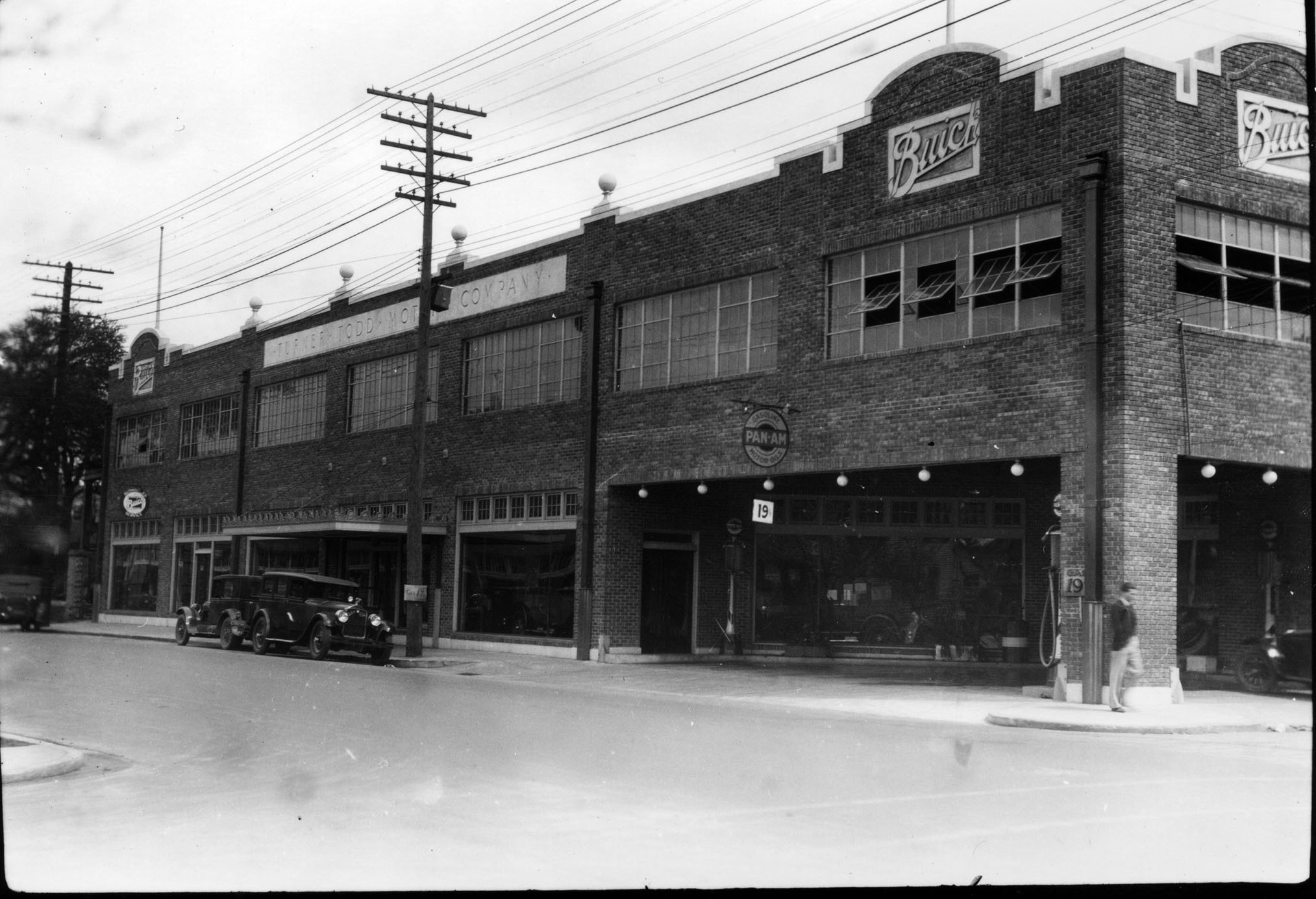Click here to view the report: Federal Tax Incentives for Rehabilitating Historic Buildings 2019
Administered by the National Park Service in partnership with the State Historic Preservation Offices, the Federal Historic Preservation Tax Incentives Program is the country’s most effective program to promote historic preservation and community revitalization through historic rehabilitation. This program is often referred to as the Historic Tax Credit, as it provides property owners with a 20 percent federal tax credit when they undertake rehabilitation of a historic building in a business or incoming-producing use while maintaining its historic integrity. Rogers & Willard’s Buick Building rehabilitation made the list of selected projects for the 2019 fiscal year. Known also as the Turner-Todd Motor Company, the historic Buick Building was originally built in 1926 on St. Louis Street, an area Mobile residents know as “Automobile Alley.”
When first constructed, the building housed and sold Buick automobiles. It soon became Motor Parts Company, which provided parts and supplies for car dealerships and the automotive industry. "Automobile Alley" remained active for many years, and in 1940 an addition was made to the building.

In 2012, Mike Rogers and Steve Willard acquired the building which had been vacant for over ten years. Rogers & Willard then decided to relocate its office to the Buick Building in 2014. With the help of the Federal and State Historic Tax Credits, City of Mobile TIF Grant, and Alabama Saves Energy Credits, the project became a reality. Company President Mike Rogers said the project was instrumental in providing a vision that led to the revitalization of the St. Louis Street Corridor. When the plans to move the office downtown began, Rogers & Willard were very intentional about studying more than just the site, but the whole street. They engaged an urban planner to create designs that would make St. Louis Street pedestrian-friendly. They also studied and promoted an idea from the City’s 2009 Master Plan which envisioned St. Louis Street as “The Technology Corridor.”
Another key to the project's success was having a major tenant partner. Rural Sourcing signed a lease for approximately one-third of the 40,000 s.f. building. Rogers said, “Without the tax credits, City incentives, and Rural Sourcing, the building might still be vacant." The restoration of the Buick building acted as a catalyst to transform the whole street.
Since its completion in 2016, St. Louis Street has seen tremendous investment with numerous other projects. Rogers said some people doubted the wisdom of moving into a blighted part of town, but now that it has been transformed, it is easy to see why Tax Credits and Incentives play such a large role in revitalizing communities. It is also an example of how a local business can use its resources to improve the community. While Rogers had the vision, even he did not think it could happen so fast. “If you told me in 4 years most of the buildings on the street would be occupied and renovated, we would have two breweries, a restaurant, and plans for a 200 unit apartment building….I would have said maybe in ten years!”